Venison bone broth is a great way to use the bones of a deer. This broth is not only easy to make, but it’s also delicious and healthy.
I am guessing that if you landed here you are probably a hunter… Or maybe know a hunter. Bottom line is, there is a gorgeous piece of venison somewhere in your kitchen right this minute…
I am also guessing that you’ve heard of the many health benefits of bone broth or maybe you simply know how precious this meat is and want to use every little bit of it, even the bones!
Venison Bone Broth Recipe…
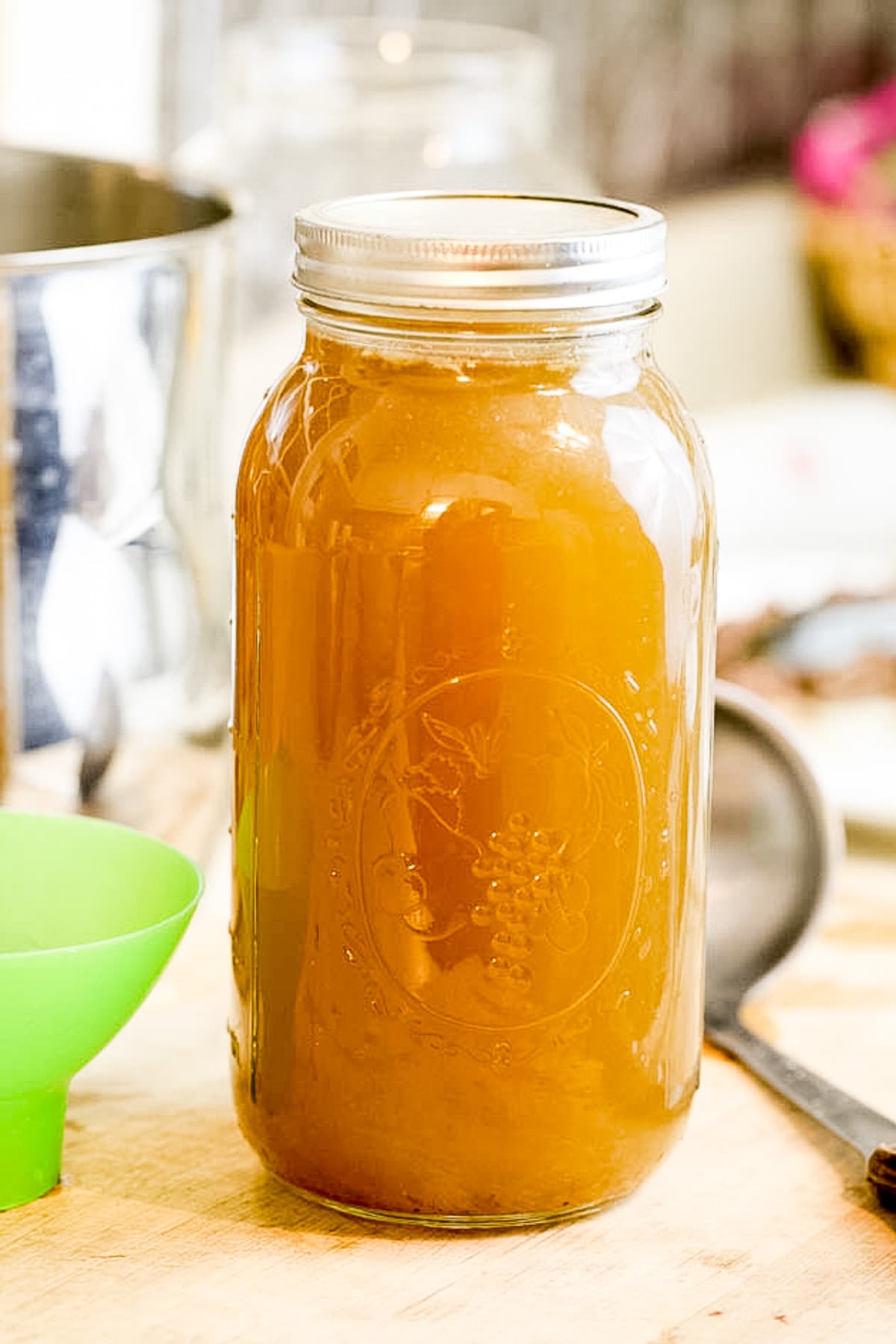
Bone broth is a simple dish that is so healthy, yet so simple to make. It is a waste to let the bones go without making bone broth especially since you can can it if freezer room is a problem (more on this later).
The Difference Between Broth and Stock…
In a stock (chicken stock, beef stock or whatever) we use the animal parts for flavoring the water which we can then use to cook with to flavor dishes. The cooking time is relatively short.
Bone broth most likely contains the same exact ingredients as you’ll find in a stock but the whole thing is simmered for long hours. Chicken broth can be simmered for up to 24 hours and venison broth (or beef) can be simmered for up to 48 hours.
The long cooking time allows the bone to release a whole lot of stuff that is super healthy for our body. So… Stock; short cooking time, broth; long cooking time. That is the only difference between the two.
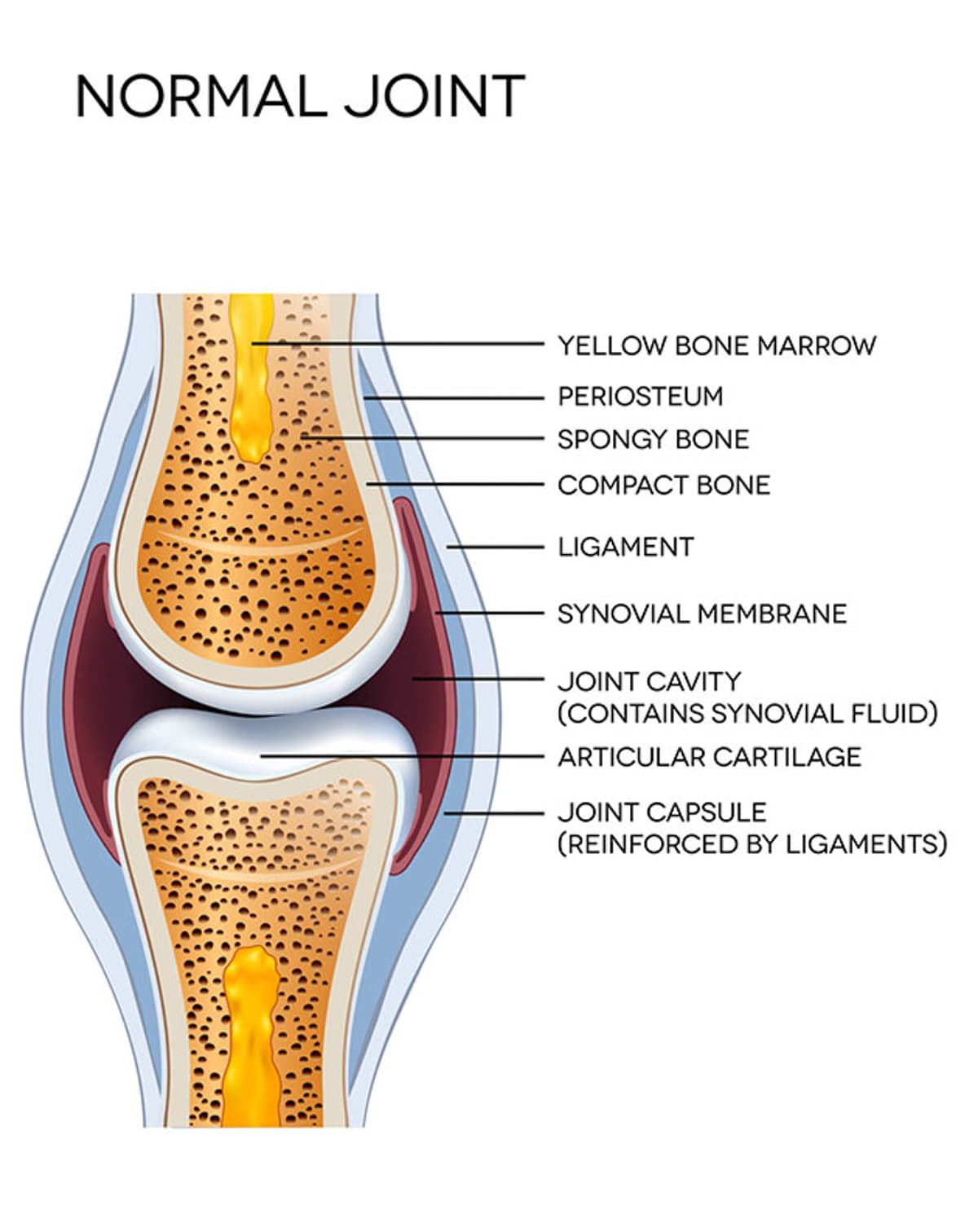
Benefits of Bone Broth…
- Support for the immune system – the amino acids that are present in bone broth (mainly chicken for that matter) has the ability to reduce inflammation in the respiratory system and therefore help in a case of a cold or the flu.
But there are a lot of other healing minerals, proteins, vitamins, and amino acids in bone broth like magnesium, phosphorus, calcium, silicon, sulphur, and many others that strengthen our immune system. - Support for the digestive system – bone broth is rich in gelatin. Gelatin helps protect, restore, and strengthen the lining of our gut. It also helps support the growth of good bacteria in our stomach (known as probiotics), it helps reduce inflammation in the digestive tract and it’s said that it even helps with food allergies.
- Support for the skeletal system – See in the picture above where it says articular cartilage? Cartilage is a flexible connective tissue that allows our bones to glide on top of one another easily and helps us move and stay flexible.
As we grow, our joints and bones experience some wear and tear and that cartilage is thinned.
All of us vertebra animals have this between our bones and when we simmer animal bones for a long time collagen is released. Collagen is the protein that can help restore the cartilage. Of course, don’t wait until you are old to make bone broth, yes? This collagen can help even the youngest of us.
We also can’t forget that as we grow older our bones themselves weaken. Bone broth contains a whole lot of gelatin in it which helps when it comes to bone health.
Ingredients…
- Venison bones
- Carrots
- Onion
- Garlic
- Parsley and/or cilantro
- Apple cider vinegar
- Bay leaves
- Peppercorns (or black pepper)
- Salt
- Chili flakes (optional)
- Water
Kitchen Tools…
How to Make Venison Bone Broth…
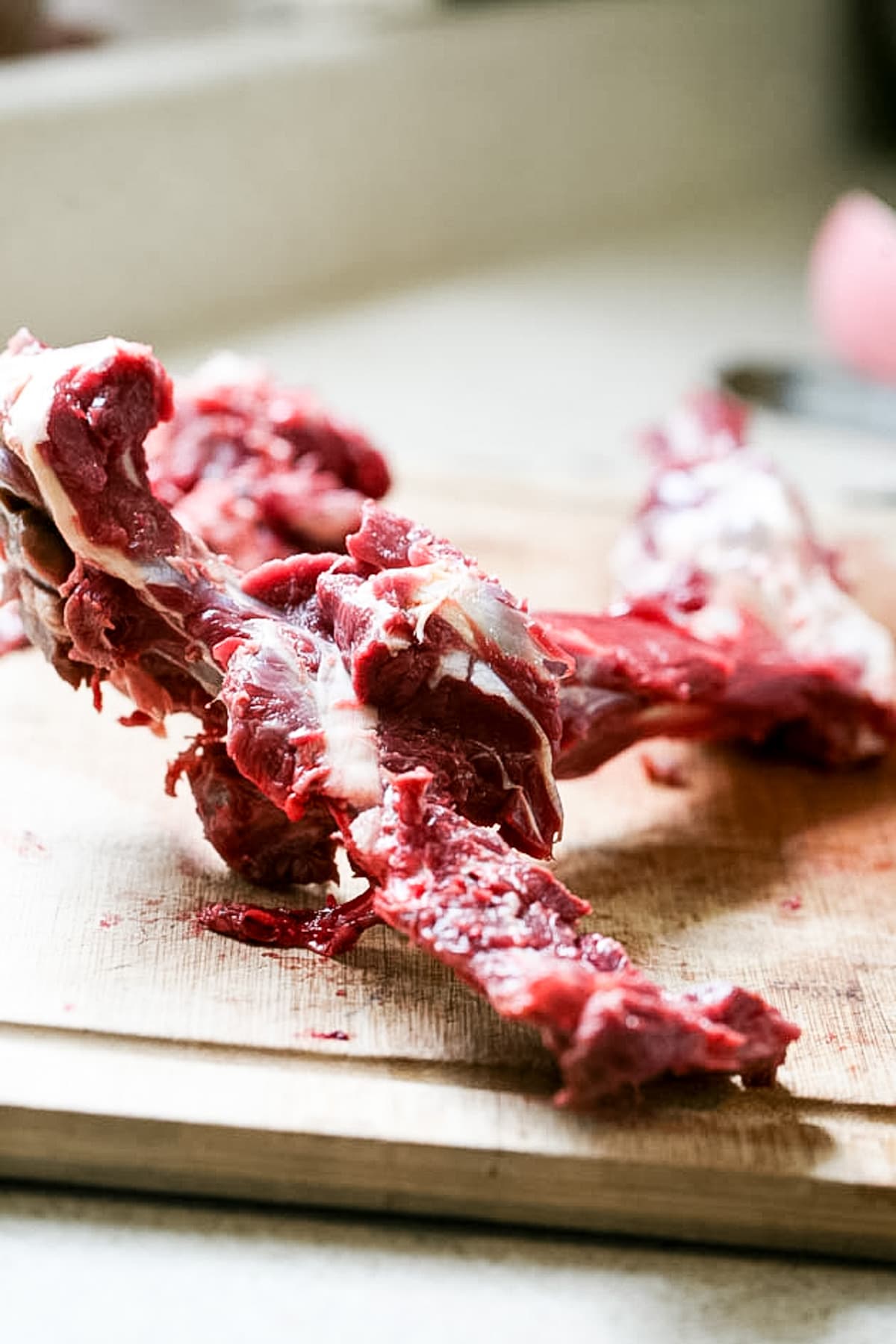
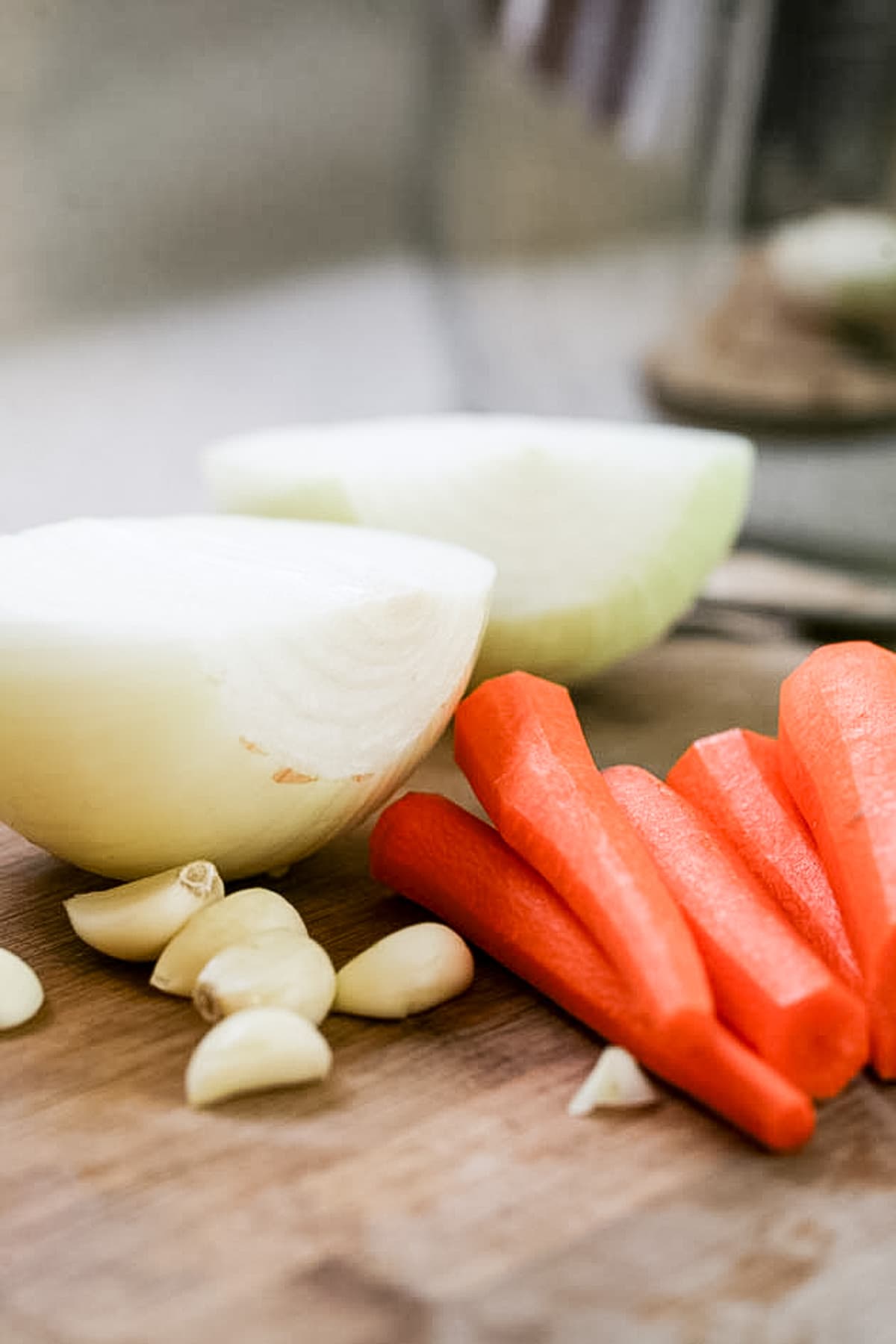
Step one – prep the ingredients. Peel the carrots, garlic, and onion. You can leave the carrots whole or cut them into large pieces. Cut the onion in half. You can leave the garlic cloves whole.
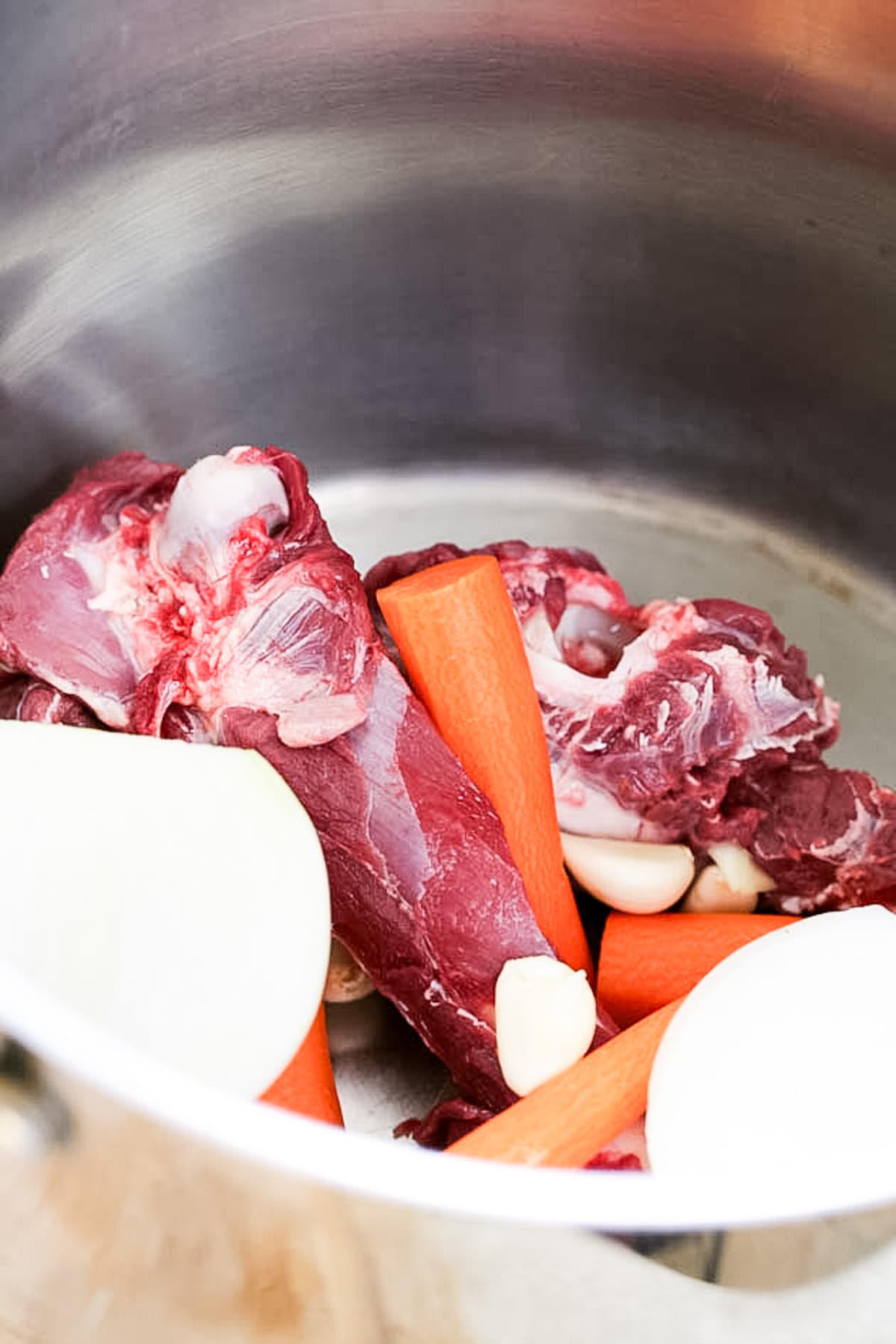
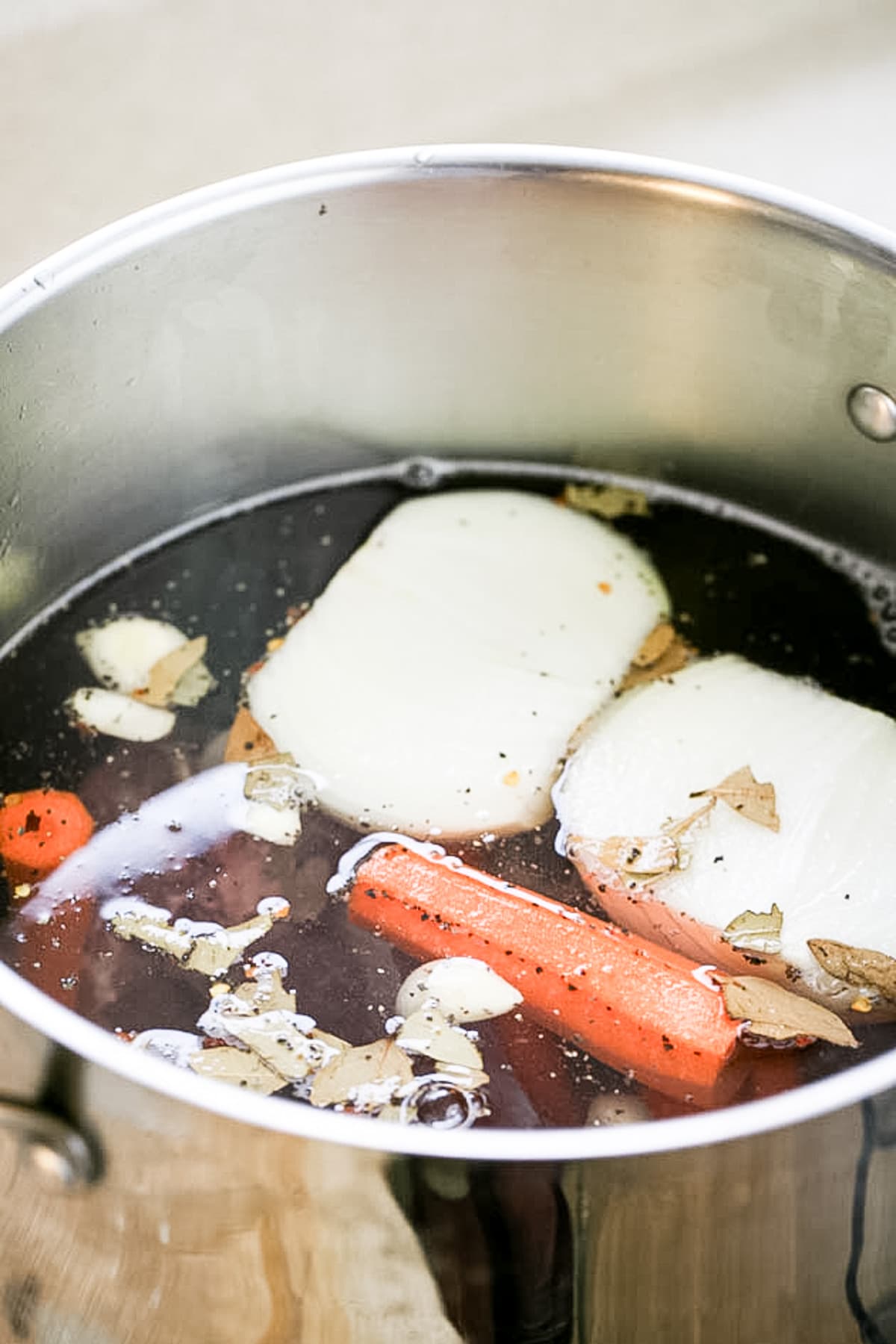
Step two – add to the pot and cook. Add the bones, vegetables, and all the rest of the ingredients to a 12-quart stockpot. Fill the pot with water and set it on the stovetop. Cover the pot, turn the heat to high, and bring to a boil. Boil for 5-7 minutes, then lower the heat to low and simmer for up to 48 hours.
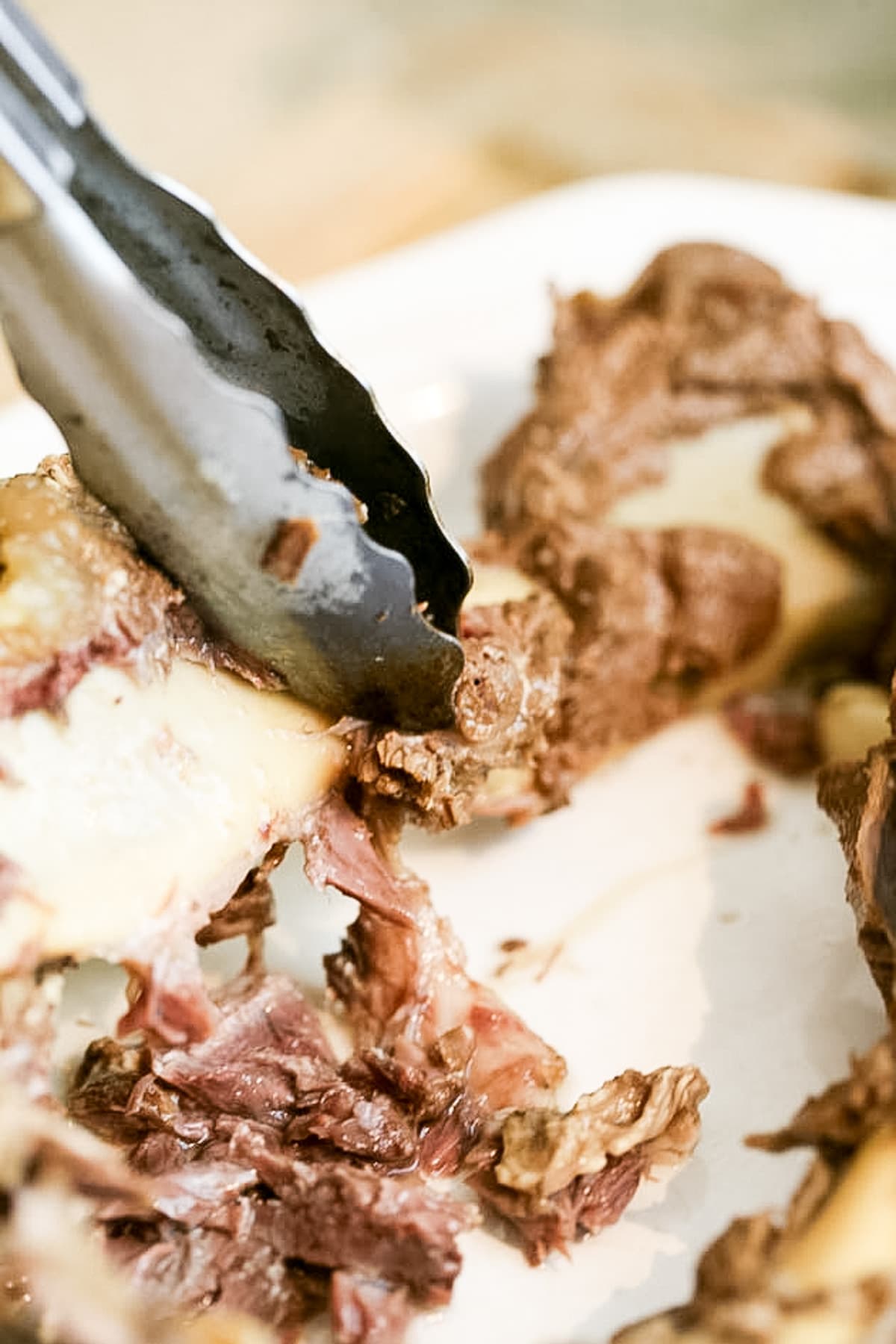
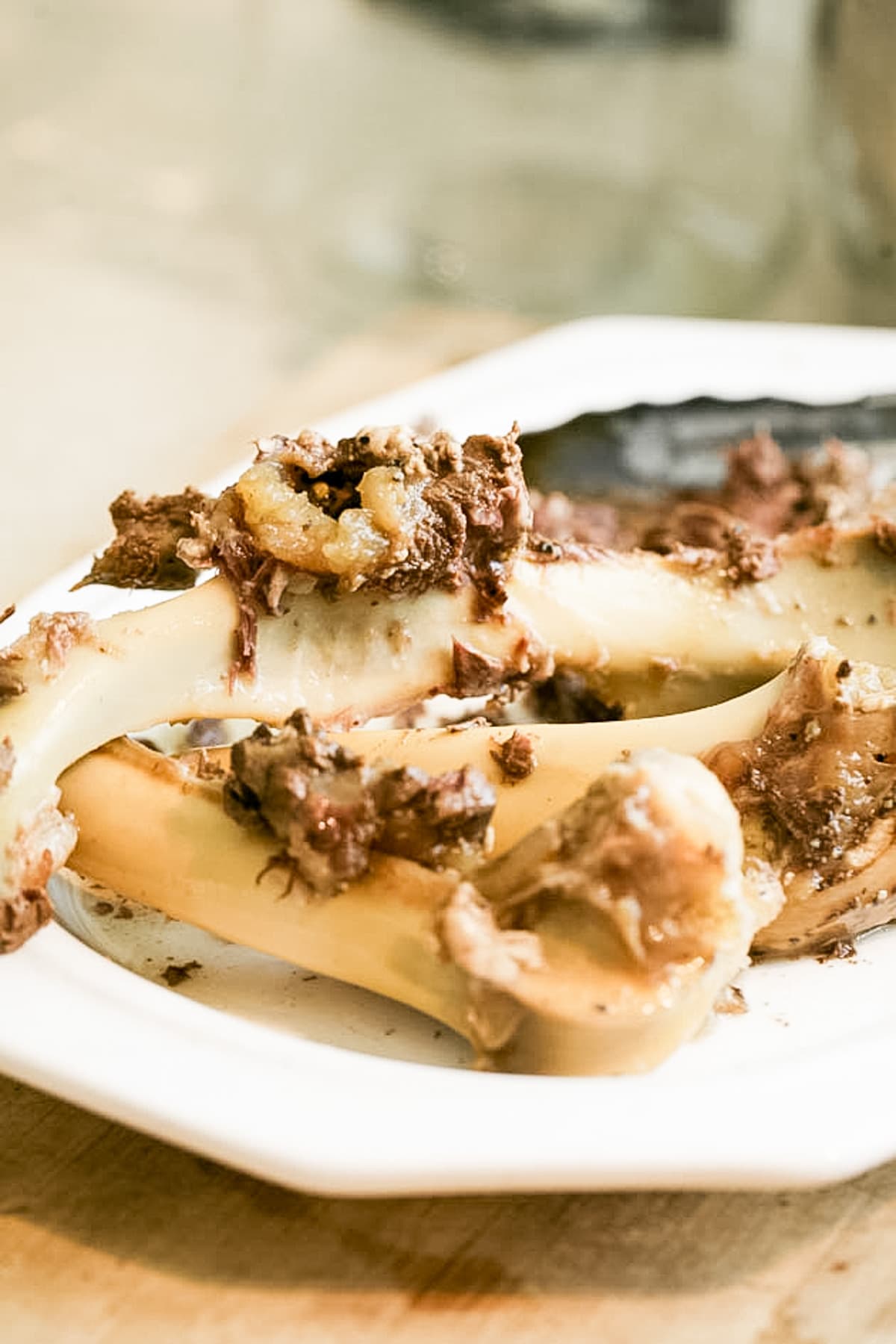
Step three – remove the bone. Remove the bone from the pot. If there was still some meat on it when you added it to the pot, it will now be so soft, delicious, and falling off the bone. Remove it from the bone and add it back to the pot if you’re going to serve the broth as a soup. If you’re planning to strain the broth, serve the meat for dinner, store it in the fridge for a couple of days, can it, or freeze it. The bones can now go to the dog (at least that’s what I do).
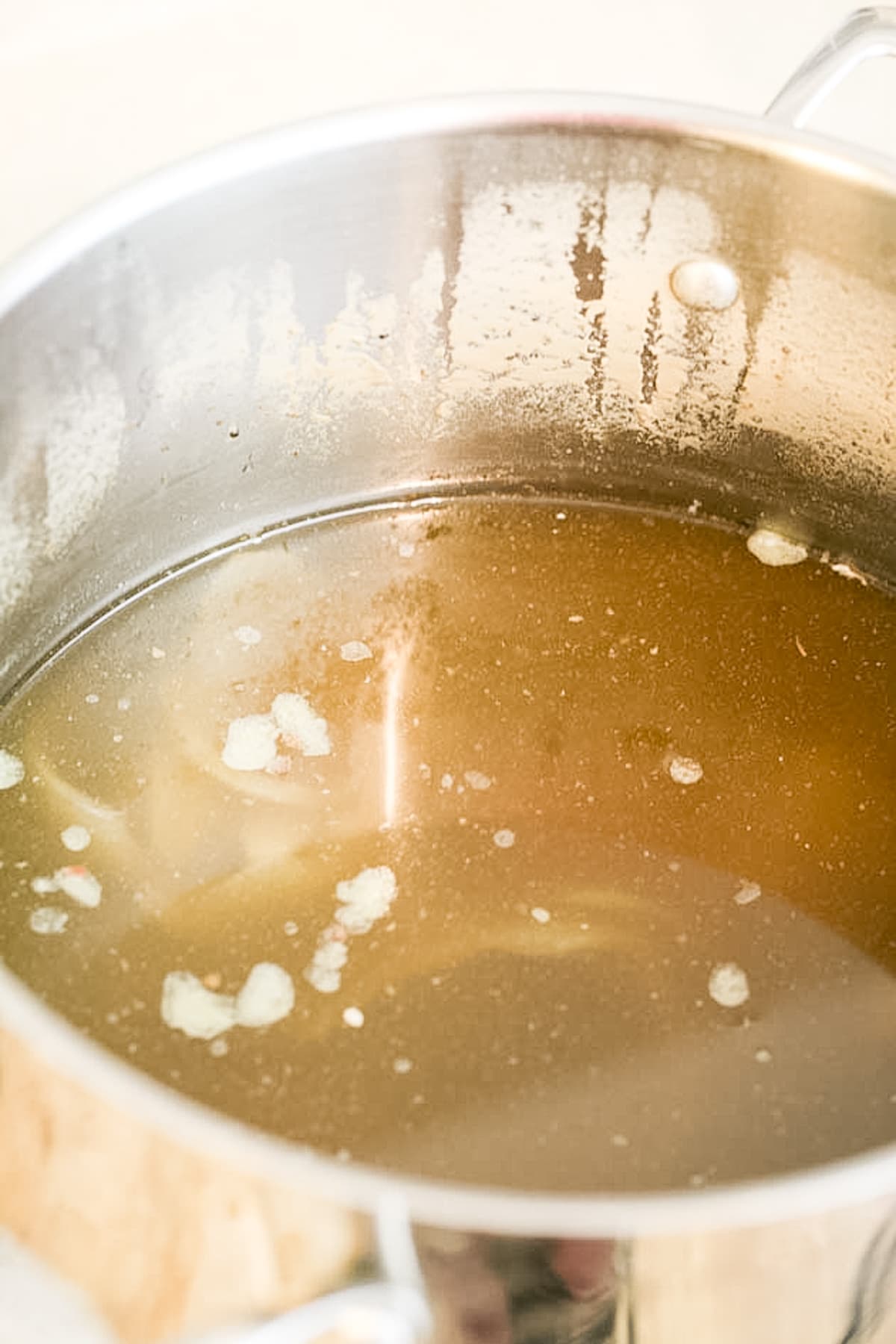
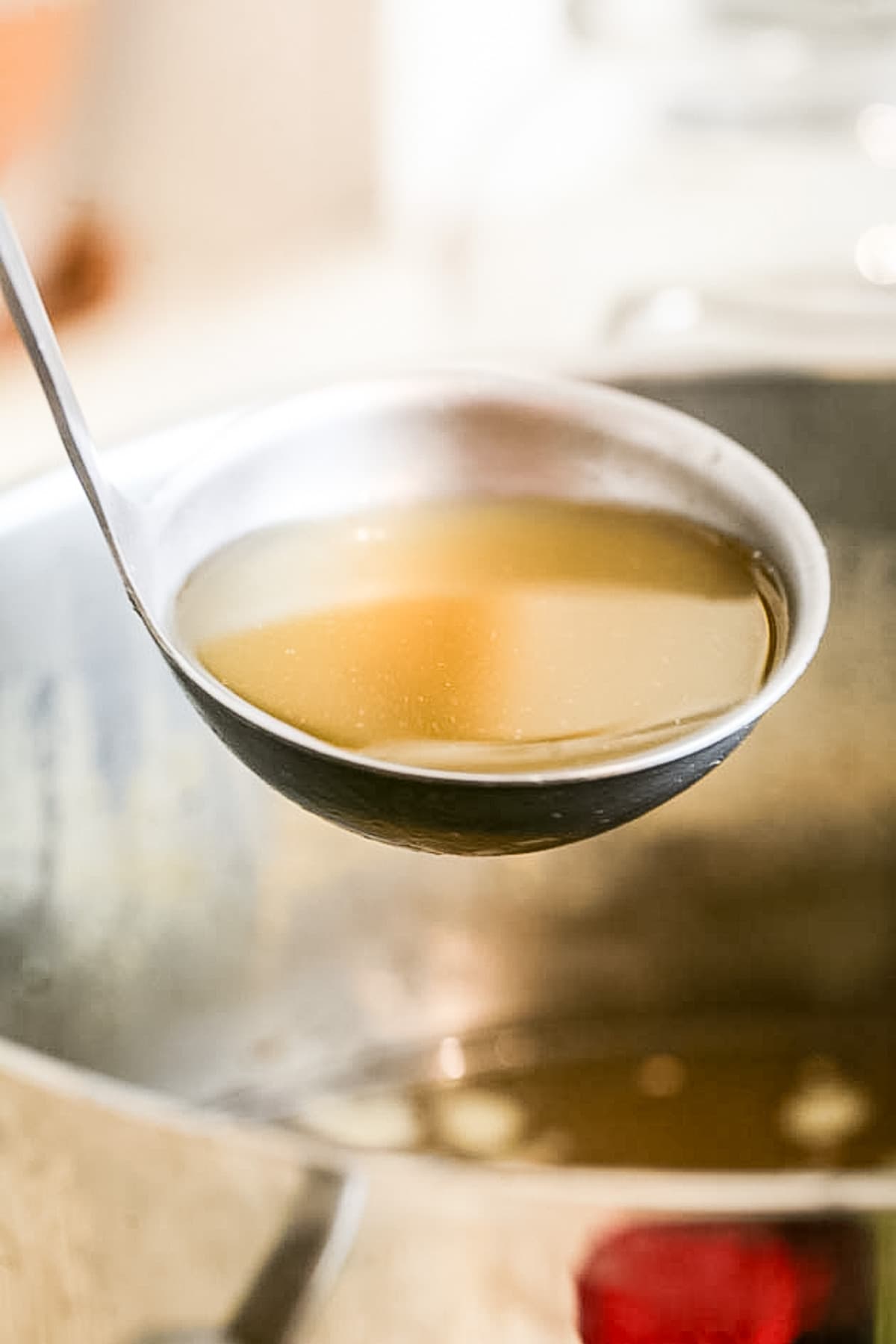
Step four – strain the broth. Straining is very optional. Feel free to leave the vegetables and meat in the broth and use it as soup. If however, you want to use your venison bone broth when cooking other dishes it might be easier to use if you strain it. Simply place a strainer over a large bowl and run the broth through the strainer so it can catch the veggies and extra meat. Of course, use whatever is left in the strainer for dinner along with the meat that you removed in the last step!
How to Store Bone Broth…
- Refrigerate – it should last in the fridge for a couple of weeks.
- Can – canning bone broth is pretty simple. This is my favorite way to preserve it simply because it can stay at room temperature, ready to be used at any moment (I’m not great at remembering to thaw anything!). I have a whole tutorial about canning bone broth here on the blog so make sure to check it out if you want to preserve your broth this way.
- Freeze – you can easily freeze bone broth in mason jars with a freezer lid, in freezer-safe containers, or in ziplock bags. It should last for at least a year.
How to Use Venison Bone Broth…
- As a soup – simply serve it as a soup. Some people like to strain it and have a cup of broth every morning for it’s health benefits.
- When cooking other dishes – you can use this venison bone broth in any recipe that calls for beef broth.
Kitchen Notes…
- Use other bones – feel free to follow this recipe with other kinds of bones, like, beef, elk, moose, or bear. If you use pork pr poultry bones, simmer for up to 24 hours instead of 48.
- Change seasonings – there are no rules when it comes to seasonings! Use whatever you want. More pepper, maybe throw in a couple of fresh peppers or dry cayenne or dry jalapenos, add dry parsley, oregano, thyme, rosemary, or any other seasonings you’d like.
- Add other vegetables – add celery, leeks, potatoes, or anything else you’d like to try.
Hands down, this is the best way to use the venison bones! Even after you use all the meat, there is still so much value in the bone and it’s a waste not to take advantage of it. I hope that venison bone broth is part of your deer processing process!
More Venison Recipes…
- BBQ Venison Neck Recipe
- Simple Venison Burger Recipe
- Pulled Venison Wrap with Red Cabbage Salad
- Deer Jerky in the Oven

Venison Bone Broth
Venison bone broth is a great way to use venison bones. It's simple to make, delicious, and healthy.
Ingredients
- 2-3 lb of venison bones
- 5 carrots peeled and cut in half
- One large onion cut in half
- 6 garlic cloves, peeled
- Parsley and/or cilantro if you'd like
- 2 tablespoons of apple cider vinegar
- 3-4 bay leaves
- 1 teaspoon of peppercorns (or black pepper)
- 1 teaspoon salt
- 1/2 teaspoon chili flakes (optional)
- Water
Instructions
- Add all the ingredients into a 12-quart stockpot. Fill it with water, cover the pot, and set it on the stovetop.
- Turn the heat to high and bring the water to a boil. Boil for 5-7 minutes. Turn the heat to low and let the pot simmer for up to 48 hours.
- Remove the bone from the pot. If there was still some meat on it when you added it to the pot, the meat would now be very soft, delicious, and falling off the bone. Remove it from the bone and add it back to the pot if you’re going to serve the broth as a soup. If you’re planning to strain the broth, serve the meat for dinner, store it in the fridge for a couple of days, can it, or freeze it. The bones can now go to the dog (at least that’s what I do).
- Straining the bone broth is very optional. Feel free to leave the vegetables and meat in the broth and use it as soup. If however, you want to use your venison bone broth when cooking other dishes it might be easier to use if you strain it. Simply place a strainer over a large bowl and run the broth through the strainer so it can catch the veggies and extra meat. Of course, use whatever is left in the strainer for dinner along with the meat that you removed in the last step!
Notes
Kitchen notes...
- Canning bone broth is pretty simple. This is my favorite way to preserve it simply because it can stay at room temperature, ready to be used at any moment (I’m not great at remembering to thaw anything!). I have a whole tutorial about canning bone broth here on the blog so make sure to check it out if you want to preserve your broth this way. Otherwise, you can store it in the fridge for a few days or in the freezer for a year or more.
- Feel free to follow this recipe with other kinds of bones, like, beef, pork, elk, moose, bear, and so on.
- There are no rules when it comes to seasonings! Use whatever you want. More pepper, maybe throw in a couple of fresh peppers or dry cayenne or dry jalapenos, add dry parsley, oregano, thyme, rosemary, or any other seasonings you’d like.
- Add celery, leeks, potatoes, or any other vegetables that you want to try. .
Nutrition Information:
Yield: 12 Serving Size: 1 quart jarAmount Per Serving: Calories: 355Total Fat: 5gSaturated Fat: 3gTrans Fat: 0gUnsaturated Fat: 2gCholesterol: 179mgSodium: 319mgCarbohydrates: 3gFiber: 1gSugar: 1gProtein: 69g

Hi! I’m Lady Lee. I help homesteaders simplify their homesteading journey while still producing a ton of food! I am a single mother of four, I was born in Israel and raised in an agricultural commune called a Kibbutz. Now I homestead in central NC.

